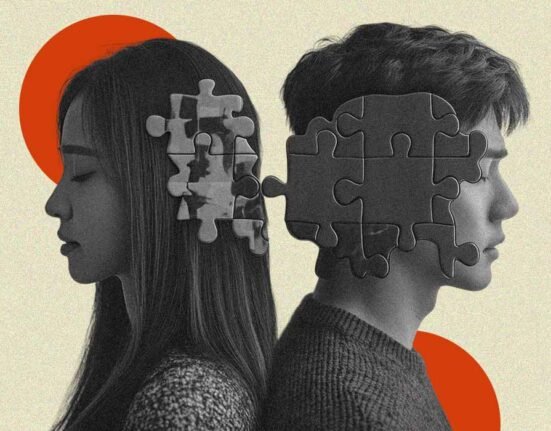Children today are raised in a media-filled world where handheld technology and streaming platforms introduce cartoon stories into their daily lives. What appears to be casual entertainment is an extracurricular classroom for emotional learning. Developmental psychology stipulates that kids learn emotional intelligence—can identify, understand, regulate, and empathise—via repeated exposure to social cues and stories. Cartoon stories, especially anime, extrapolate these experiences by presenting colourful emotional performances, comprehensible characters, and emotionally engaging story lines that guide children through complex feelings.
Read More: How Cartoons Can Shape Kids’ Long-Term Eating Habits
Emergence of anime culture as an effective teacher
Anime has also evolved separately from Western animation. Whereas early American cartoons like Looney Tunes were largely episodic and lighthearted in nature, Japanese anime built serialised storytelling into its foundation. The introduction of Astro Boy in the 1960s ushered in a new age, introducing themes of humanity, sacrifice, and morality. Later decades saw globally influential series like Dragon Ball, Sailor Moon, and Pokémon, each incorporating emotionally driven growth into multi-episode story arcs.

Miyazaki Hayao’s My Neighbour Totoro and Spirited Away turned anime into an international phenomenon by presenting children confronting loneliness, loss, and resilience. Research about children’s responses to these films demonstrates that viewers become attached to protagonists’ emotional struggles and work through fears and desires through narrative reflection (Napier, 2005). It was a cultural milestone: anime was no longer just entertainment, but a tool with the power to change the way children were taught and handled emotions.
Unlike short episodic cartoons, serialised anime offers children repeated exposure to characters growing, failing, and learning. Developmental theorists note that emotional intelligence is not learned in discrete moments but through sustained experience over time (Denham, 1998). Anime’s serial format thus offers children unique avenues for learning empathy and perseverance.
Read More: AI-Generated Animations vs Studio Ghibli: Why Human Storytelling Still Matters
How animation builds emotional intelligence
Research on socio-emotional learning for children has shown that animation facilitates learning in several ways. Hyperbole helps emotional states to be more legible, to begin with. Anime facial expressions of the Japanese kind, like puffy tears and melodramatic poses, optimise children’s ability to read sadness, happiness, anger, and fear. Tests showed children who view affectively rich animation perform better on emotion recognition tests than children who view less affectively rich media (Calvert & Richards, 2014).
Second, animation establishes narrative distance. Because characters are fanciful and stylised, children can engage with fear, sadness, or conflict without having to confront them directly. In this “vicarious emotional learning,” children learn to be empathetic in a safe psychological space (Bandura, 2001).
Third, serialised media provide repeated exposure. Television shows like Naruto or One Piece run with themes of loss, reconciliation, and perseverance across tens of episodes. Scholars have said that repetition is vital to emotional generalisation, which allows children to see how similar problems can have varied solutions depending on choices and attitudes (Wilson, 2008).
Finally, animation brings image, sound, and story together. Neuroscience evidence confirms that multisensory learning enhances memory encoding, which results in more stable emotional learning (Immordino-Yang & Damasio, 2007). The combination of emotive music and imagery accounts for the fact that children remember the “feel” of a favourite cartoon segment years after the specifics of its plot are no longer remembered.
Evidence from research: the promising but mixed landscape
The relationship between media use and emotion development is complex. Large surveys found no overall negative correlation between screen viewing and emotional intelligence. Instead, outcomes depend on content type and parental mediation. In one survey of over 1,000 children, children whose parents discussed media emotionally scored higher on empathy than children who watched media in an unmediated manner (Nathanson, 1999).
Experimental studies also offer proof of this. Young children who watched prosocial animated television shows had greater sharing and cooperation in play sessions after watching, compared to those who were shown neutral or violent programs (Mares & Woodard, 2005). These findings suggest that animation can model and encourage positive social action.
Special populations benefit, too. Research on children with autism suggests that cartoons’ exaggerated and codified cues are particularly good at supporting emotion recognition abilities compared to live-action programs (Golan et al., 2010). This suggests animation’s unique worth as an emotional training tool.
But there should be discretion. Longitudinal studies indicate that children who excessively rely on media to regulate emotions—e.g., TV watching whenever they are sad—may have poorer coping skills in real life (Coyne et al., 2018). Overreliance jeopardises the avoidance of adaptive learning. Equilibrium exposure, with supportive guidance by adults, remains the direction to take.
Read More: What is the Significance of Attachment on the Socio-emotional Development of Children?
Anime genres most conducive to EI
Certain genres especially excel at building up emotional intelligence. Healing anime (iyashikei) is all about harmony and comfort, and it emulates peacefully and graciously. Slice-of-life tales expose ordinary relationships, giving children practice in recognising friendship, disagreement, and forgiveness. Coming-of-age and psychological dramas explore identity crises, loss, and survival, giving teenage and preteen children a model for exploring personal angst.
Scholarly criticism suggests that this type of genre flourishes since it shows emotionally realistic conflicts. The characters experience jealousy, guilt, or self-doubt, as they are typically complex, like real children. Unlike simplistic portrayals in some Western cartoons, anime swears to complexity and is therefore highly effective in promoting emotional development (Allison, 2006).
Risks and limitations
Despite these advantages, there are drawbacks. Excessive screen time has been linked with diminished sleep, physical activity, and face-to-face contact—all crucial to sound emotional development (Twenge & Campbell, 2018). While anime does contain rich narratives, it can never substitute for real-world social practice.
Misinterpretation is also at risk. Young children may misread morally ambiguous narratives or tolerate violent behaviour without some kind of adult intervention. Parasocial relationships with fictional people, while usually positive, can replace real social interaction if viewing becomes excessive. These are just reasons why balance and parental mediation are so important.
Alternatives and complements to anime
Anime works, but it has to be integrated into a broader emotional learning framework. Storybooks continue to be the most evidence-based tool for building empathy. Shared book reading has been shown to strengthen children’s emotional vocabulary and theory of mind (Mar et al., 2009). Role-play and drama sessions also strengthen perspective-taking, with school-based interventions reporting high levels of improvement in empathy and conflict resolution skills (Goldstein & Winner, 2012).
Interactive learning applications, if well-programmed, guide children to make predictions regarding decisions and feelings, although they remain quality- and adult-dependent. Co-operative games, both virtual and physical, necessitate co-operation, patience, and instantaneous emotional regulation, all while offering face-to-face practice off screens.
Read More: The Role of Theory of Mind in Autism Spectrum Development
Practical tips for parents and teachers
Teachers and parents have the central task of rendering cartoon stories educational tools. Begin by selecting emotionally true material. Programs in which characters apologise, admit mistakes, or explicitly identify emotion provide clear models. Co-viewing solidifies outcomes; posing reflective questions during or after programs—”Why do you suppose she felt that way?”—invites children to generalise lessons.
Connecting cartoon scenarios with real life consolidates learning. After a show on loneliness, parents can ask children to tell them about a personal lonely experience and tell them how to deal with it. Establishing regular routines that incorporate a balance of screen time and reading, physical activity, and social contact ensures broad-based development. For children with functional needs, specifically targeted cartoon tools can be especially useful when combined with expert guidance.
Short anime clips can be integrated into lessons on empathy in schools and then followed by role-play or group discussion. Media literacy, in combination with lessons on emotions, gives children the power to think for themselves about what they are consuming.
Conclusion: Big hearts nourished by little screens
The global success of anime has demonstrated that small screens can have the ability to make big hearts. Anime, by offering emotionally authentic storytelling, gives children spaces where they can exercise empathy, adaptability, and self-control. According to studies, cartoon tales, when well mediated, can enhance emotional intelligence rather than break it down.
But no one medium guarantees emotional maturity. Emotional intelligence is the product of a mosaic of influences—family conversations, friendships, reading, play, and cultural narratives. Anime, with its highly emotionalised world and worldwide popularity, is a key tile for this mosaic. Added to considerations in direction and supportive activities, little screens can assist in creating large hearts.
FAQs
1. How does Anime play a role in moulding a child’s perception?
Anime and anime characters do play a role in moulding a child’s perception of reality, since the chances of misconceptions and overestimation begin at a very young age, depending on the type of anime and culture.
2. Why is it considered important to analyse the pros and cons of co-watching anime with children?
Analysing the pros and cons of co-watching anime with children is important to ensure the content is age-appropriate and aligns with parental goals, as it promotes positive developmental outcomes such as creativity, cultural awareness, and problem-solving skills while guarding against potential harm like addiction, exposure to inappropriate themes, and negative health effects.
3. What can be the best possible alternative activities other than anime for young children?
Young children can explore many alternatives that promote creativity, physical activity, and cognitive development, such as arts and crafts (like playdough or painting), outdoor play (including gardening or a nature scavenger hunt), interactive games (like board games or building forts), and literacy activities such as reading or storytelling. Other options include science experiments, cooking and baking, and creative play like putting on a puppet show or building with blocks.
References +
Allison, A. (2006). Millennial monsters: Japanese toys and the global imagination. University of California Press.
Bandura, A. (2001). Social cognitive theory of mass communication. Media Psychology, 3(3), 265–299.
Calvert, S. L., & Richards, M. N. (2014). Children’s parasocial relationships with media characters. International Journal of Learning and Media, 4(2), 55–72.
Coyne, S., Stockdale, L., & Padilla-Walker, L. (2018). Media time = family time? Associations between media use and family connection. Journal of Adolescent Research, 33(1), 79–103.
Denham, S. A. (1998). Emotional development in young children. Guilford Press.
Golan, O., Ashwin, E., Granader, Y., McClintock, S., Day, K., Leggett, V., & Baron-Cohen, S. (2010). Enhancing emotion recognition in children with autism spectrum conditions: An intervention using animated vehicles with real emotional faces. Journal of Autism and Developmental Disorders, 40(3), 269–279.
Goldstein, T. R., & Winner, E. (2012). Enhancing empathy and theory of mind. Journal of Cognition and Development, 13(1), 19–37.
Immordino-Yang, M. H., & Damasio, A. (2007). We feel, therefore we learn. Mind, Brain, and Education, 1(1), 3–10.
Mar, R. A., Tackett, J. L., & Moore, C. (2009). Exposure to narrative fiction and the theory of mind. Journal of Personality, 77(3), 693–726.
Mares, M.-L., & Woodard, E. (2005). Positive effects of television on children’s social interactions. Media Psychology, 7(3), 301–322.
Napier, S. J. (2005). Anime from Akira to Howl’s Moving Castle: Experiencing contemporary Japanese animation. Palgrave Macmillan.
Nathanson, A. I. (1999). Identifying and explaining the relationship between parental mediation and children’s aggression. Communication Research, 26(2), 124–143.
Twenge, J. M., & Campbell, W. K. (2018). Associations between screen time and lower psychological well-being among children and adolescents. Preventive Medicine Reports, 12, 271–283.
Wilson, B. J. (2008). Media and children’s aggression, fear, and altruism. The Future of Children, 18(1), 87–118.













Leave feedback about this